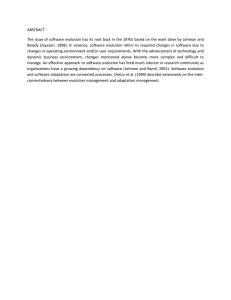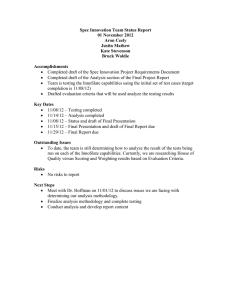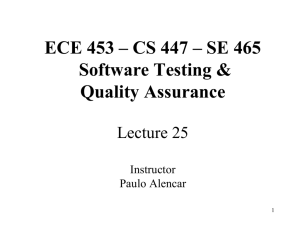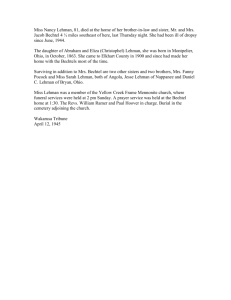Unit 16 - UCL Computer Science
advertisement
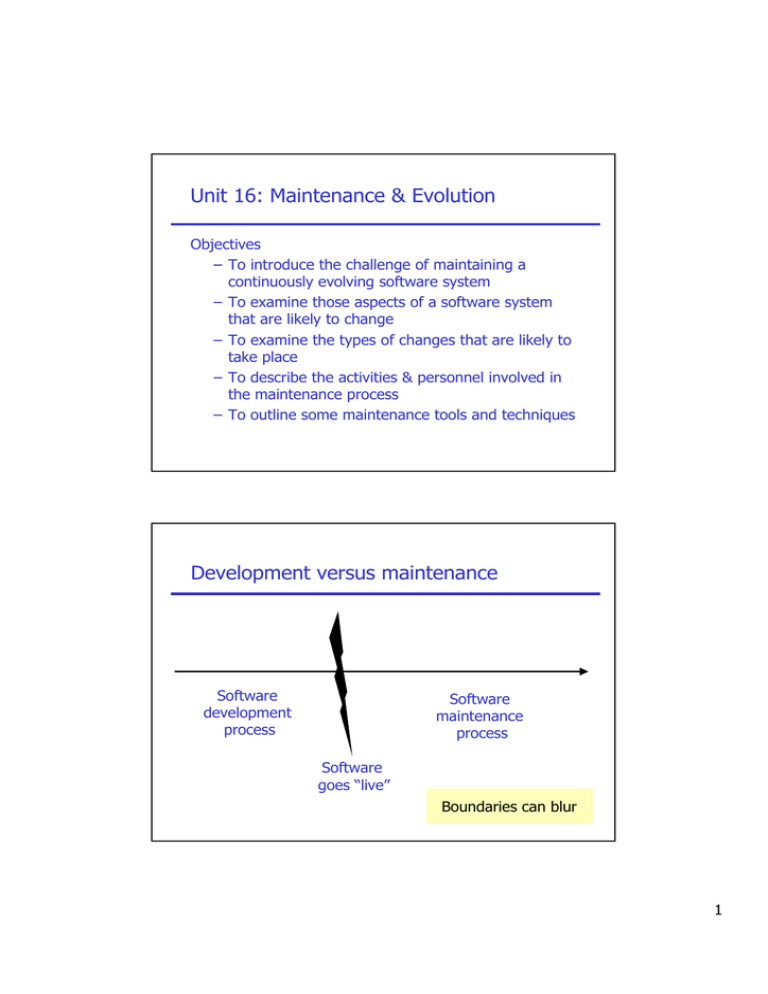
Unit 16: Maintenance & Evolution Objectives Ð To introduce the challenge of maintaining a continuously evolving software system Ð To examine those aspects of a software system that are likely to change Ð To examine the types of changes that are likely to take place Ð To describe the activities & personnel involved in the maintenance process Ð To outline some maintenance tools and techniques Development versus maintenance Software development process Software maintenance process Software goes ÒliveÓ Boundaries can blur 1 Change ¥ Software changes; software systems evolve ¥ Why does software change? ¥ Perception that software is easy to change Legacy software systems Hardware failure failure rate infant mortality wear out time 2 Software failure (idealised) failure rate infant mortality time Software failure (actual) failure rate actual change idealised time 3 ÒLawsÓ of software evolution ¥ Continuing change [Lehman & Belady 1985] ¥ Increasing complexity ¥ Fundamental law of program evolution ¥ Conservation of organisational stability ¥ Conservation of familiarity => Software systems need to be built to incorporate change Describing how software can change ¥ Can categorise software systems in terms of how they may change & how likely they are to change [Lehman 1980] Ð S-systems Ð P-systems Ð E-systems 4 S-systems ¥ Systems that are formally defined by & derivable from a specification ¥ Unlikely to change Real world Problem Reqts spec System Information P-systems ¥ Systems that are based on an abstraction of a problem rather than a completely defined specification ¥ Subject to incremental change Real world Problem Abstraction Reqts spec System Information 5 E-systems ¥ Systems that are embedded in the real world & change as the world changes Real world Problem ¥ Subject to constant change Abstraction Reqts spec System Information Ways to deal with change ¥ Software maintenance - the general process of changing a system once it has been delivered We will focus on this ¥ Architectural transformation - modifying the system architecture to a distributed configuration (legacy systems & middleware) ¥ Software re-engineering - improving the system structure to reduce the cost of future maintenance Read about these in [Sommerville 2001] 6 Software maintenance Types of software maintenance ¥ Corrective - maintaining control over day-to-day operation ¥ Adaptive - maintaining control over modifications ¥ Perfective - perfecting existing functions ¥ Preventive - preventing performance degrading to an unacceptable level Not always so clear cut in practice 7 The who, why, what of maintenance ¥ Maintenance team Good maintainers are good detectives! ¥ Maintenance process Change requests Impact analysis Fault repair Release planning Platform adaptation Change implementation System release System enhancement From [Sommerville 2001] p 610 Predicting maintenance effort ¥ Factors affecting effort include application type, system novelty, turnover & staff availability, system life-span, dependence on a changing environment, hardware characteristics, design quality, code quality, documentation quality, testing quality, code complexityÉ M = p + Kc-d OR Size = ASLOC(AA + SU + 0.4DM = 0.3CM + 0.3IM)/100 8 Techniques & tools for maintenance ¥ Key techniques Ð Configuration management & change control Ð Requirements traceability & impact analysis ¥ Key tools Ð Text editors Ð File comparators Ð Compilers & linkers Ð Debugging tools Ð Cross-reference generators Ð Static code analysers Ð Configuration management repositories When to stop maintenance? ¥ Is the cost of maintenance too high? ¥ Is the system reliability unacceptable? ¥ Can the system no longer adapt to further change within a reasonable timescale? ¥ Is system performance still beyond prescribed constraints? ¥ Are system functions of limited usefulness? ¥ Can other systems do the same job faster, better, cheaper? ¥ Is the cost of maintaining the hardware great enough to justify replacing it with cheaper, newer hardware? [Pfleeger 1998, p418] 9 Key points ¥ The more a software system is linked to the realworld, the more likely it is to change ¥ Software maintenance is the most common approach for dealing with change & there are 4 basic types of maintenance depending on the type of change ¥ Projects need dedicated teams & processes for maintenance activities ¥ The best way to lower maintenance effort is to build quality in from the start! Many related terms & concerns! Core references ¥ Keith Bennett & Vaclav Rajlich, ÒSoftware Maintenance & Evolution: A RoadmapÓ, in the FSE 2000 readings You are expected to read this - the material is examinable! ¥ Roger Pressman, ÒSoftware Engineering: A PractitionerÕs ApproachÓ, McGraw-Hill, 5th edition, ISBN: 0-07709677-0 Ð Issues discussed in You are strongly advised to various places read one of these! ¥ Ian Sommerville, ÒSoftware EngineeringÓ, AddisonWesley, 6th Edition, ISBN: 0-201-39815-X (Chapter 27) Ð Read the rest of Part 7 to get a wider perspective 10 Supplementary references ¥ M. M. Lehman & L. A. Belady, ÒProgram Evolution," Academic Press, January 1985 ¥ Shari Lawrence Pfleeger, ÒSoftware Engineering: Theory & PracticeÓ, Prentice Hall, 1998 ¥ S. A. Bohner, ÒSoftware Change Impact AnalysisÓ, IEEE Computer Society Press, 1996 ¥ IEEE Software - Special issues on Maintenance topics - Jan 1990, Jan 1993, Jan 1995 ¥ Dedicated Journal - ÒSoftware Maintenance: Research & PracticeÓ & an International Conference 11
